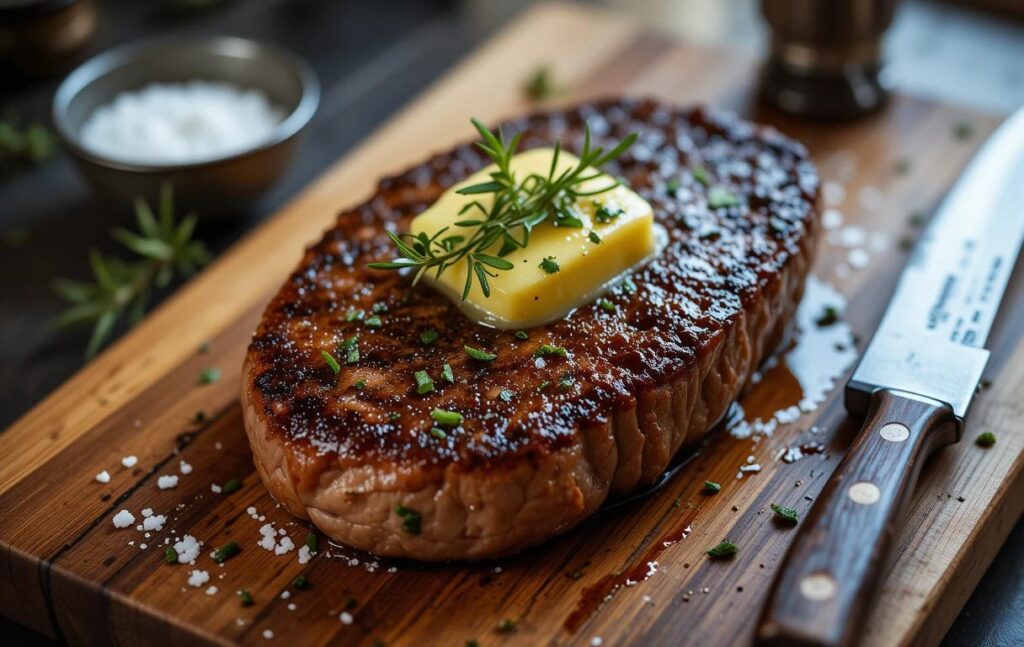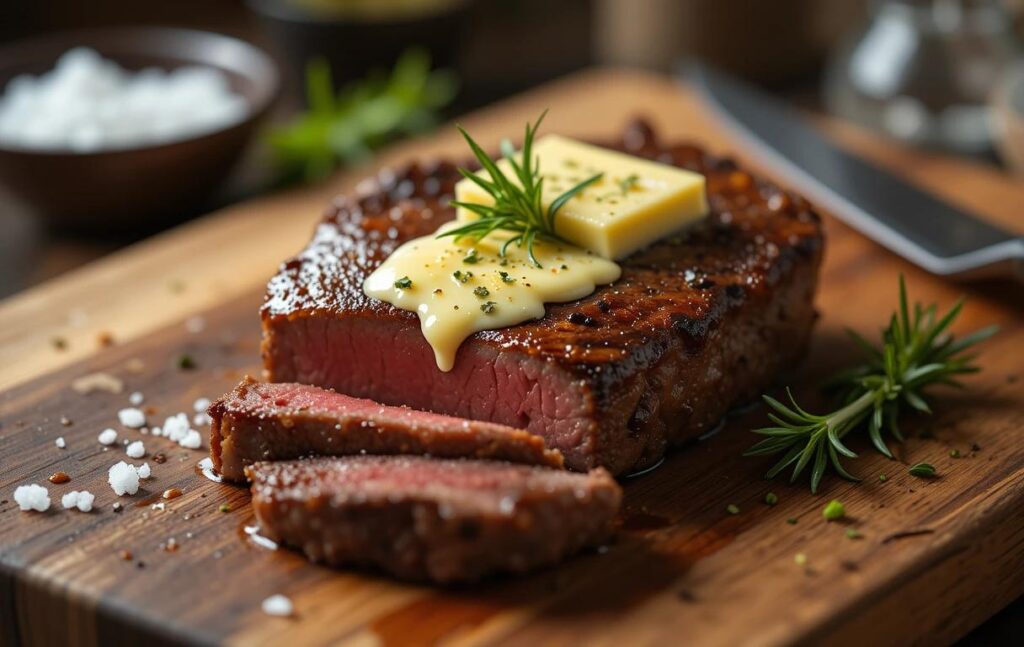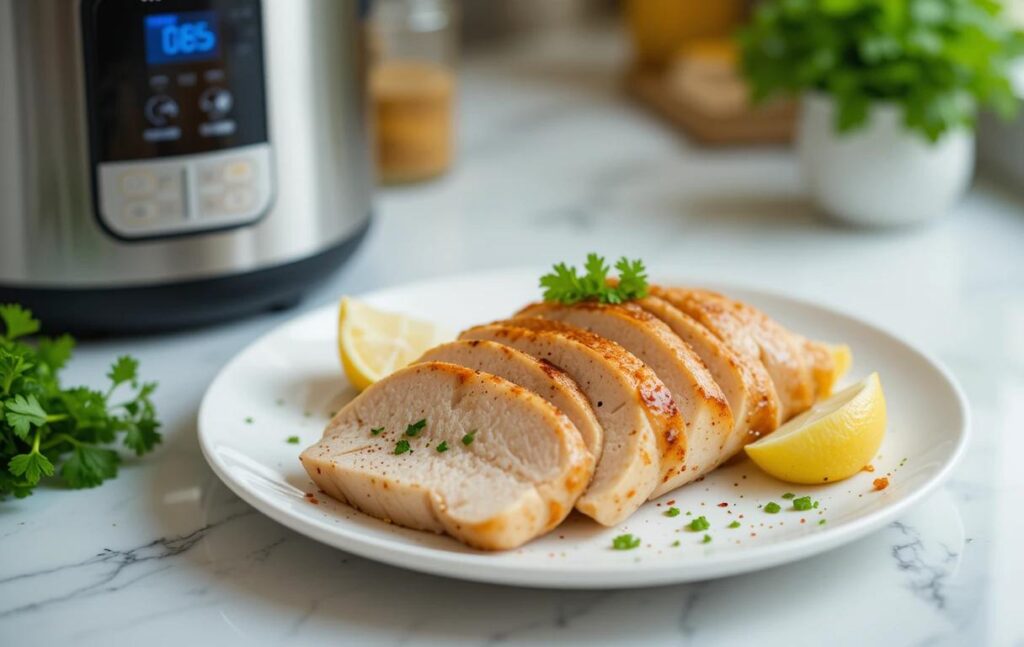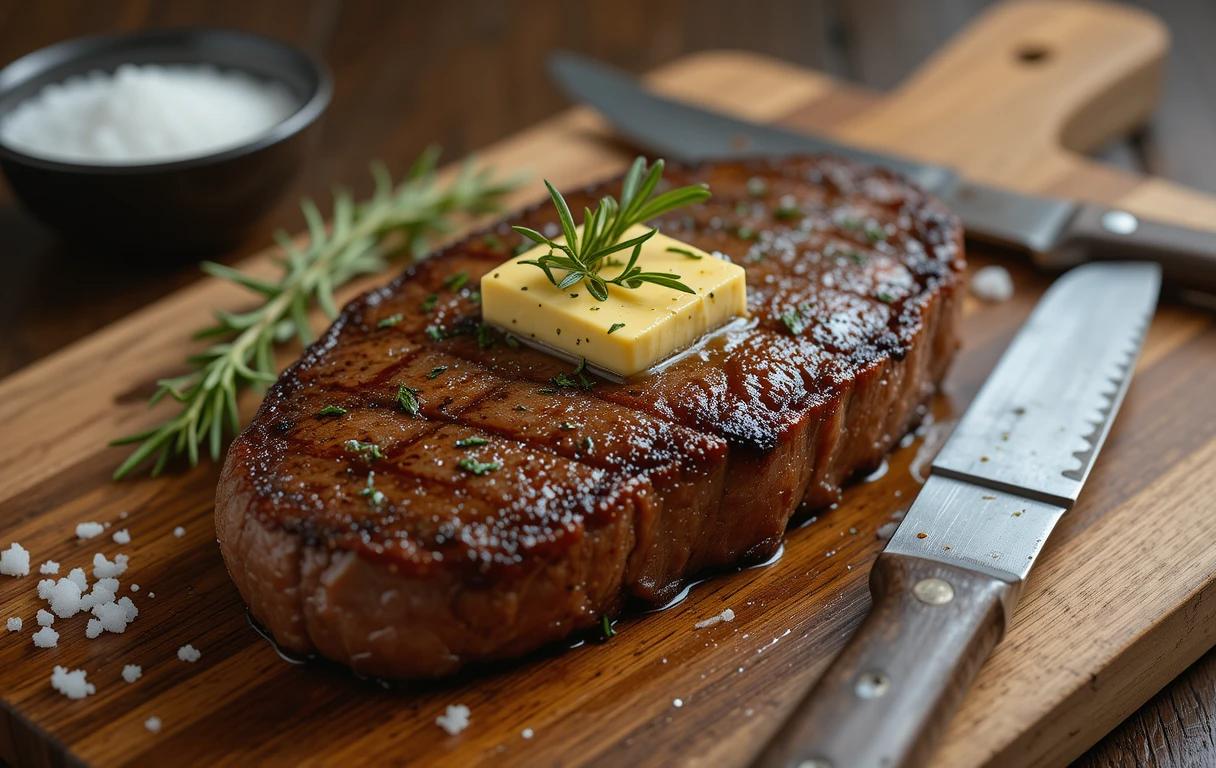ntroduction to Sous Vide Recipes
Sous vide, a French term meaning “under vacuum,” is a modern cooking technique that involves sealing food in airtight bags and cooking it in a water bath at a precise, controlled temperature. This method, once exclusive to high-end restaurants, has become increasingly popular among home cooks thanks to the availability of affordable sous vide machines and accessories.
Why Sous Vide?
Sous vide cooking is celebrated for its ability to deliver consistent, restaurant-quality results. It ensures even cooking, locks in flavors, and maintains the natural juiciness of ingredients. Whether you’re cooking a tender steak, succulent chicken, delicate fish, or even desserts, sous vide guarantees perfection without the stress of overcooking.
Benefits of Sous Vide Cooking
- Precision: Control the exact temperature for optimal doneness.
- Consistency: Achieve uniform cooking results every time.
- Enhanced Flavor: Retain natural juices and aromas in vacuum-sealed bags.
- Convenience: Prepare meals in advance; sous vide allows for flexibility in timing.
- Versatility: Suitable for meats, vegetables, eggs, desserts, and even infused beverages.
Getting Started with Sous Vide
To embark on your sous vide journey, you’ll need:
- Sous Vide Machine or Immersion Circulator: The core tool to heat water to the desired temperature.
- Vacuum Sealer or Resealable Bags: Essential for sealing food to prevent water infiltration.
- A Large Container: A pot or plastic tub to hold the water bath.
- Cooking Weights or Clips: To keep the bags submerged.
Basic Sous Vide Process
- Prepare the Ingredients: Season the food as desired or add marinades.
- Seal the Bag: Vacuum-seal or use a water displacement method with resealable bags.
- Set the Temperature and Time: Follow recipe guidelines for precise cooking.
- Cook in Water Bath: Place the sealed bag in the preheated water bath.
- Finish with a Sear (if needed): For meats, searing after sous vide adds a delicious crust and enhances appearance.
Exploring Recipes
Sous vide recipes cover a wide range of dishes:
- Steaks: Achieve the perfect medium-rare with a juicy interior and crispy sear.
- Poultry: Cook chicken breast or thighs that are tender and flavorful.
- Seafood: Keep fish and shellfish moist and flaky without overcooking.
- Vegetables: Retain nutrients and texture with precise cooking.
- Eggs: Create silky poached eggs or custards with ease.
Final Thoughts
Sous vide cooking transforms your kitchen into a haven of culinary precision and creativity. By mastering this method, you can elevate everyday meals and experiment with new flavors and textures, all while minimizing stress and maximizing results. Dive into sous vide recipes and discover the joy of effortless gourmet cooking!

Sous Vide Equipment
Sous vide cooking requires some specialized equipment, but the essentials are straightforward and increasingly affordable. Here’s a guide to help beginners get started, including tips on choosing the right sous vide machine and optional accessories to enhance your experience.
Essential Equipment for Beginners
- Sous Vide Machine (Immersion Circulator)
- The core tool of sous vide cooking, a sous vide machine heats and circulates water to maintain a precise, consistent temperature.
- It ensures that food cooks evenly and retains its moisture and flavor.
- Vacuum Sealer or Resealable Bags
- Vacuum sealing locks in flavor, prevents water intrusion, and keeps food fresh.
- Alternatively, high-quality resealable bags (e.g., freezer bags) can be used with the water displacement method.
- Container for Water Bath
- Any large pot or heat-resistant plastic tub can serve as your water bath.
- Choose a size that fits your sous vide machine and the food you’re preparing.
- Weights or Clips
- Keeps bags submerged and prevents floating during cooking.
- You can use specialized sous vide weights or simple binder clips.
How to Choose a Sous Vide Machine
When selecting a sous vide machine, consider the following factors:
- Precision and Temperature Range
- Look for a machine that offers precise temperature control, typically within ±0.1°C or ±0.2°F.
- A wide temperature range ensures you can cook everything from delicate fish to tough cuts of meat.
- Ease of Use
- Choose a machine with intuitive controls or app integration.
- Many devices now feature Wi-Fi or Bluetooth connectivity, allowing remote monitoring via smartphone.
- Heating Power
- Machines with higher wattage heat water more quickly.
- For most home cooking, 750–1100 watts is sufficient.
- Build Quality and Durability
- Stainless steel components are more durable and resistant to wear than plastic.
- Look for models with robust build quality to ensure longevity.
- Size and Compatibility
- Compact models are ideal for small kitchens.
- Ensure the machine is compatible with the containers or pots you plan to use.
- Brand Reputation and Support
- Established brands like Anova, Breville, and Joule are known for reliability and customer support.
- Read reviews to gauge user satisfaction.
Accessories You May Need
While not essential, these accessories can enhance your sous vide cooking experience:
- Sous Vide Container with Lid
- Designed for sous vide cooking, these containers often come with a lid to minimize water evaporation during long cooks.
- Insulation Sleeves or Covers
- Help maintain temperature and reduce energy consumption.
- Food-Grade Silicone Bags
- An eco-friendly alternative to disposable plastic bags.
- Reusable and safe for sous vide cooking.
- Bag Clips
- Useful for securing bags to the side of the container.
- Searing Tools
- For finishing meats after sous vide, a cast iron skillet, torch, or specialized searing tool creates the perfect crust.
- Rack for Bag Organization
- Keeps multiple bags separated for even cooking in larger containers.
- Digital Thermometer
- Double-check the final internal temperature of meats for added peace of mind.
Preparing for Sous Vide Cooking
Selecting the Right Ingredients
- Quality Matters:
- Sous vide enhances natural flavors and textures, so use high-quality, fresh ingredients.
- Opt for well-marbled cuts of meat, fresh seafood, and seasonal vegetables for best results.
- Consider Thickness:
- Uniform thickness ensures even cooking. Thicker cuts may require longer cooking times.
- Special Cuts for Sous Vide:
- Tough cuts like brisket or short ribs benefit from sous vide’s long, slow cooking process to become tender.
- Delicate items like salmon or scallops shine with precise temperature control.
Vacuum Sealing Techniques
- Vacuum Sealer:
- Place food in the vacuum-seal bag with seasonings or marinades.
- Remove as much air as possible to create a tight seal and ensure even cooking.
- Water Displacement Method:
- If using resealable bags, seal the bag except for one corner. Submerge the bag slowly in water, letting the water pressure push out the air. Seal the remaining corner.
- Avoid Overpacking:
- Leave some space in the bag to ensure water circulates freely around the food.
- Double-Seal Liquids:
- When sealing foods with marinades or sauces, double-seal the bag to prevent leaks.
Prepping and Marinating for Sous Vide
- Seasoning Basics:
- Lightly season with salt, pepper, and herbs. Sous vide amplifies flavors, so use sparingly.
- Add aromatics like garlic, rosemary, or citrus for an enhanced taste.
- Marinades and Rubs:
- Marinate meats and vegetables directly in the vacuum-sealed bag.
- Avoid overly acidic marinades for long cooks, as they can alter texture.
- Pre-Searing:
- Searing meats before sous vide adds an extra layer of flavor (Maillard reaction).
- Optional but particularly effective for robust flavors.
- Chilling for Food Safety:
- For foods prepared in advance, chill sealed bags in an ice bath and refrigerate until ready to cook.

Top Sous Vide Recipes
Sous Vide Steak Recipes
- Classic Sous Vide Ribeye:
- Temperature: 130°F (54°C) for medium-rare
- Time: 1–2 hours
- Finish with a quick sear in a hot skillet for a golden crust.
- Filet Mignon with Herb Butter:
- Add butter, garlic, and thyme to the vacuum bag for rich flavor.
- Sear and serve with a side of roasted vegetables.
- Flank Steak for Tacos:
- Temperature: 135°F (57°C)
- Time: 2–4 hours
- Slice thinly against the grain for tender taco meat.
Poultry Recipes
- Juicy Chicken Breast:
- Temperature: 145°F (63°C)
- Time: 1–2 hours
- Season with lemon and herbs for a simple, healthy dish.
- Crispy Skin Duck Breast:
- Cook sous vide, then sear skin-side down in a hot skillet until crispy.
- Pair with a cherry reduction sauce for an elegant meal.
- Turkey Breast with Sage and Garlic:
- Perfect for a small holiday gathering, ensuring moist and tender turkey.
Fish and Seafood Recipes
- Butter-Poached Salmon:
- Temperature: 122°F (50°C) for tender, flaky salmon
- Time: 30–45 minutes
- Add a slice of butter and dill to the bag for a luxurious taste.
- Sous Vide Lobster Tail:
- Temperature: 140°F (60°C)
- Time: 45 minutes
- Serve with garlic butter for a restaurant-quality dish.
- Scallops with Lemon Butter:
- Sous vide scallops are cooked to perfection and seared briefly for a caramelized crust.
Vegetarian and Vegan Recipes
- Sous Vide Asparagus:
- Temperature: 185°F (85°C)
- Time: 10–15 minutes
- Season with olive oil, salt, and pepper for vibrant, crisp-tender asparagus.
- Garlic Mashed Potatoes:
- Cook peeled potatoes with garlic and butter sous vide. Mash after cooking for a creamy side dish.
- Marinated Tofu Steaks:
- Temperature: 185°F (85°C)
- Time: 1 hour
- Add soy sauce, ginger, and sesame oil for a flavorful vegan entrée.
- Sous Vide Beets:
- Temperature: 185°F (85°C)
- Time: 1–2 hours
- Cooked sous vide, beets retain their natural sweetness and color.
Sous Vide Desserts
Custards and Crèmes
- Classic Crème Brûlée:
- Temperature: 176°F (80°C)
- Time: 1 hour
- Prepare custard mix (egg yolks, cream, sugar, vanilla) and pour into mason jars. Cook sous vide, chill, then finish with a caramelized sugar top.
- Silky Flan:
- Sous vide ensures perfectly smooth flan every time. Seal the custard mix in jars and cook gently for a creamy texture.
- Chocolate Pots de Crème:
- Rich and indulgent, these chocolate desserts are prepared in jars and cooked at a precise temperature for consistent results.
Cakes and Cheesecakes
- Mini Cheesecakes:
- Temperature: 176°F (80°C)
- Time: 1 hour
- Make individual cheesecakes in jars. Add flavors like vanilla, lemon, or chocolate for variety.
- Molten Lava Cakes:
- Sous vide guarantees the perfect balance between a gooey center and a soft cake exterior. Cook batter-filled jars, then serve warm.
- Sticky Toffee Pudding:
- Cooked sous vide in jars, this dessert retains its moisture and rich flavor, perfect with caramel sauce.
Fruit Compotes and More
- Fruit Compotes:
- Temperature: 185°F (85°C)
- Time: 30 minutes
- Create vibrant compotes from berries, apples, or pears by cooking sous vide with sugar and spices.
- Sous Vide Poached Pears:
- Temperature: 176°F (80°C)
- Time: 1 hour
- Pears cooked in red wine and spices become a show-stopping dessert.
- Custard-Filled Donuts:
- Prepare a creamy custard sous vide, then pipe it into fried donuts for a decadent treat.
Innovative Uses of Sous Vide
Sous Vide for Meal Prepping
- Batch Cooking:
- Sous vide allows you to prepare multiple meals at once. Cook proteins, vegetables, and grains in advance, then chill and store them for the week.
- Reheat in the water bath to avoid overcooking.
- Portion Control:
- Cook and vacuum-seal individual servings of meals for easy grab-and-go options.
- Extended Shelf Life:
- Sous vide cooking combined with vacuum sealing helps preserve food’s freshness longer than traditional methods.
Sous Vide Infusions: Oils, Alcohol, and More
- Infused Oils:
- Combine olive oil with garlic, herbs, or spices in a sealed bag and cook at 131°F (55°C) for 2–4 hours for flavorful infusions.
- Cocktail Infusions:
- Create unique cocktails by infusing spirits with fruits, herbs, or spices. Sous vide speeds up the process compared to traditional methods.
- Example: Bourbon infused with orange zest and vanilla at 140°F (60°C) for 2 hours.
- Flavored Syrups:
- Make syrups for cocktails or desserts by combining sugar, water, and flavoring ingredients in a vacuum-sealed bag and cooking sous vide.
- Homemade Extracts:
- Create vanilla, mint, or citrus extracts with alcohol and your flavoring of choice in a sous vide bath.
Creative Non-Food Applications
- DIY Spa Treatments:
- Use sous vide to warm massage oils or create custom bath salts and scrubs. Precise temperature control ensures a consistent product.
- Candle Making:
- Melt wax for candles in vacuum-sealed bags, ensuring even heating and easy cleanup.
- Laboratory Applications:
- Sous vide machines can be used for experiments requiring precise temperature control, such as in science or craft projects.
- Seed Germination:
- Gardeners can use sous vide for consistent temperature conditions to germinate seeds or create plant-based solutions.
Final Thoughts
Sous vide cooking goes far beyond savory dishes, offering endless possibilities for desserts, creative infusions, and even non-food uses. From perfectly poached pears to infused oils and spa treatments, sous vide unlocks a world of innovation. Whether you’re preparing meals for the week, creating gourmet desserts, or exploring creative projects, sous vide makes precision and consistency achievable for everyone!

FAQs on Sous Vide Recipes
1. Can You Overcook Food in Sous Vide?
Technically, it’s difficult to “overcook” food with sous vide since the water bath maintains a constant temperature, preventing food from exceeding the desired doneness. However, leaving food in the bath for too long may affect its texture. For example:
- Meats can become overly tender or mushy if cooked for many hours beyond the recommended time.
- Vegetables may lose their crispness if left too long.
Always follow recipe guidelines for optimal results.
2. How to Achieve a Perfect Sear After Sous Vide?
To create a delicious crust after sous vide:
- Dry the Surface: Pat food dry with paper towels to remove excess moisture. This ensures proper browning.
- Use High Heat: Use a hot cast-iron skillet, grill, or torch to sear quickly without overcooking the interior.
- Add Fat: Butter, oil, or rendered fat enhances browning and flavor.
- Timing: Sear for 1–2 minutes per side, just enough to create a crust without cooking further.
- Resting: No need to rest sous vide meat before serving, as it’s already perfectly cooked.
3. Best Foods for Sous Vide Beginners
Start with simple recipes to build confidence:
- Steak: A classic, easy dish to achieve the perfect medium-rare.
- Chicken Breast: Sous vide ensures moist and tender results every time.
- Eggs: Ideal for experimenting with textures (poached, soft-boiled, or custard-like).
- Vegetables: Asparagus, carrots, or potatoes cook evenly and retain their flavor.
- Salmon: A great choice for learning precision cooking.
4. Equipment Maintenance Tips
- Sous Vide Machine:
- Clean regularly by descaling with vinegar or citric acid to remove mineral deposits.
- Wipe down the exterior and ensure vents are unobstructed.
- Vacuum Sealer:
- Clean the sealing bar after each use to ensure a tight seal.
- Avoid overloading the device to extend its lifespan.
- Bags and Containers:
- Reusable silicone bags can be washed thoroughly and sanitized.
- Plastic sous vide containers should be cleaned with warm, soapy water.
- General Tips:
- Store equipment in a dry, cool place.
- Check for wear and tear, especially on seals or cords, and replace as needed.
5. Can You Sous Vide Without a Vacuum Sealer?
Yes! If you don’t have a vacuum sealer, you can use the water displacement method:
- Place food in a resealable freezer bag.
- Slowly lower the bag into a container of water, letting the pressure push out the air.
- Seal the bag completely before submerging it in the sous vide bath.
Reusable silicone bags are another eco-friendly option for vacuum-free sous vide cooking.
Conclusion
Recap of Key Points
- Sous vide cooking offers precise temperature control, ensuring consistently delicious results for a wide range of dishes.
- Essential equipment includes a sous vide machine, vacuum sealer (or resealable bags), and a water bath container.
- Key techniques include vacuum sealing, proper seasoning, and achieving a perfect sear after sous vide.
- It’s a versatile cooking method suitable for meats, seafood, vegetables, desserts, and even infusions.
Encouragement to Experiment with Sous Vide Recipes
Sous vide is a culinary journey that rewards creativity and experimentation. Whether you’re a beginner mastering basics or an experienced cook pushing boundaries, sous vide makes it easy to elevate your dishes. Embrace the possibilities, try new recipes, and enjoy the satisfaction of achieving restaurant-quality meals in your own kitchen!
For More Recipes
a pretty life in the suburbs marshmallow vanilla buttercream
mississippi mud pie ice cream
boston cream pie near me
vegan barley soup

